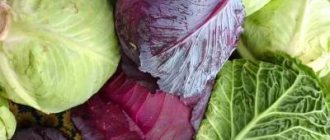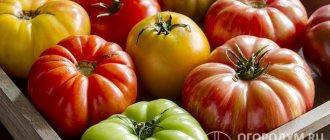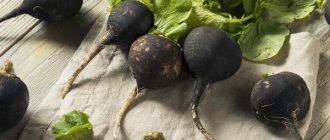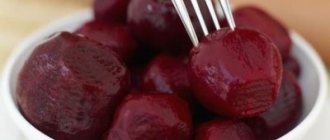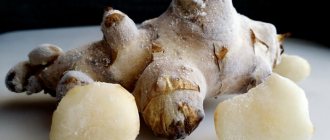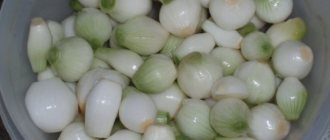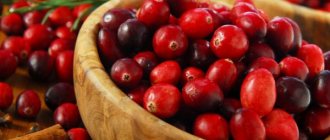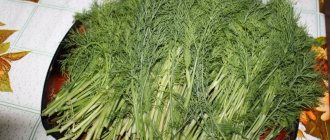After harvesting a rich harvest, housewives have a question: how to preserve eggplants for the winter? Despite the rather dense peel, the vegetable is very capricious in storage and requires the creation of suitable conditions. In an unfavorable microclimate, the product quickly deteriorates, loses its taste, vitamins and minerals.
Our article presents useful tips and little secrets that will help you preserve eggplants at home for a long time.
You can store eggplants fresh, frozen, dried or canned. The main thing is to choose good fruits and create favorable storage conditions
Harvesting and preparing vegetables for storage
If you want to keep eggplants fresh and tasty, take care of their correct and timely collection (before frost). Harvest in dry weather and try to immediately protect it from direct sunlight. Cut the fruits with a sharp knife or pruning shears, leaving 3-4 cm of the stem.
Late (ripening period - from 140 days or more) and mid-season (up to 130 days) eggplant varieties are best suited for storage : “Almaz”, “Gorodovoy”, “Romantic”, “Sofya”, “Tezka”, “Torpeda”, "Universal 6" and others.
For storage, choose mid- or late-ripening varieties of eggplant. Collect them during the ripening period, not allowing them to overripe
For storage, use vegetables whose shape, size and skin color correspond to the ripeness parameters characteristic of the variety.
It is important that the fruits are free from damage , signs of disease and pest damage. To do this, carefully examine each vegetable and discard those that raise doubts.
Eggplants must be ripe . There are no problems with overripe ones: they can be identified by the presence of lighter spots on the skin and a decrease in the elasticity of the pulp. The problem in this case is that eggplants, unlike tomatoes and peppers, cannot ripen indoors. When picked slightly unripe, they immediately begin to deteriorate, and, as a rule, it is impossible to distinguish ripe from unripe, since their skins have the same “ripe” color (for example, purple). Fortunately, you can still figure it out. Unripe eggplants weigh much less than fully ripe ones. Therefore, only “heavy” fruits are stored, and those that are too light are selected for immediate processing.
For storage, choose only ripened, firm eggplants with whole peel.
After sorting, dry the eggplants in a dark, well-ventilated area for 1 day. If the weather is good, you can place the vegetables outside, but in this case, be sure to cover them with burlap, protecting them from the sun.
Do not wash eggplants before storing them in the cellar or refrigerator. Moisture will speed up the rotting process and can lead to the loss of the entire crop.
Useful properties of blue ones
Among these are the following:
- has diuretic properties, helps against swelling;
- contains few calories;
- stimulates the gastrointestinal tract;
- promotes hematopoiesis due to the content of copper and magnesium;
- normalize the functioning of the cardiovascular system;
- prevents the development of cholelithiasis;
- due to its low calorie content, it is very useful for people who are overweight;
- ideal for the prevention of cancer.
For these reasons, I want to eat eggplants not only in summer and autumn, but also in winter, when there is a constant lack of vitamins in the body, since it spends more energy fighting the cold and various viruses, while the immune system wears out, I want to somehow support it . To do this, many thrifty people try to preserve fruits and vegetables for the winter using various methods. Today we will talk about how to keep blueberries fresh for the winter.
Shelf life of eggplants
It is important for every housewife to know how long eggplants and preparations made from them can be stored, this will allow the product to be consumed before the expiration date. For convenience, all information about shelf life is collected in the table:
| Storage method | Term |
| At room temperature | 2-4 days |
| In a refrigerator | 7-14 days |
| On the balcony or in a cool closet | 30 days |
| In the cellar or basement | 2-4 months |
| Dried | 3-6 months |
| In the freezer | 12 months |
| Dried | 12 months |
| Canned | 1.5-2 years |
Adviсe
If you know the secrets and subtleties of storing, collecting and preparing eggplants and know how to apply them in practice, you can greatly simplify your life.
If you want to preserve the integrity of eggplants in an apartment environment, you can use paper bags. Just put each one in a separate bag and put it in a cool place. Due to excellent breathability, the fruits will be stored for a long time. Nowadays there are various refrigerators. If you have the No frost function, then eggplants can be stored for up to 2 months
You should pay attention to the color of the eggplants; if, after cutting them, they immediately turn brown, then you should not freeze them, as they will be bitter later. You shouldn’t stop at just one option for storing blueberries; to know all the tastes and nuances, you should try making a little of each type
If you want the fruits to freeze in a short period of time, then you should cut them into small cubes and lay them out in one layer.
If all conditions are met, you can preserve all the beneficial elements that eggplant contains, as well as diversify your diet with nutritional qualities. With proper processing, you can enjoy the taste of your favorite vegetables until spring.
How to keep eggplants fresh in the basement or cellar
Eggplants are well preserved in a cellar or basement. In such rooms there is a suitable temperature (+3...5 ℃) and air humidity (75-85%).
There are several ways to store vegetables in the cellar:
- Wrap the eggplants in paper and place them on shelves previously lined with straw. Cover the top with burlap, and if the cellar freezes, with warm blankets.
- Place the vegetables in a box , sprinkling each row with ash or dry sand.
- Wrap 2-3 eggplants in plastic or paper bags , squeeze out as much air as possible from them and tie tightly. Place the products in wooden or plastic boxes and place them on the floor.
You can store eggplants in the cellar in straw. To preserve your harvest, go through your vegetables every 2 weeks and remove any spoiled, limp or crushed ones.
Common Mistakes
When preparing eggplants for the winter, you can make mistakes that will lead to damage to the product or its taste. If you do not sterilize the jar before sealing, then even after boiling the contents, there is a chance that it will become moldy or begin to deteriorate. With sudden changes in air temperature or humidity, the shelf life of prepared fresh vegetables is greatly reduced. Exposure of fruits to direct sunlight accelerates the process of spoilage. They can also release substances harmful to the body.
Storing eggplants in the freezer with other products is not recommended, as vegetables quickly absorb foreign odors.
How to store eggplants at home
You can preserve eggplants for several weeks at home. To do this, it is important to create a favorable microclimate in compliance with the following recommendations:
- Storage temperature – +3…5 ℃.
- Air humidity – 75-85%.
- Complete absence of sunlight or artificial light.
At temperatures above +6 ℃, the fruits become covered with gray rot. If the thermometer readings exceed +20 ℃, vegetables change their color and lose their taste.
You can store eggplants at home in the refrigerator , where optimal and stable temperature and air humidity are maintained. Wrap each vegetable in cling film or paper and place in the vegetable compartment.
When storing eggplants in the refrigerator, limit their contact with other vegetables or fruits. This will protect the products from rapid spoilage and rotting.
You can store vegetables on an insulated balcony or loggia. To do this, wrap each fruit in cling film, carefully place it in a wooden box and take care to protect the product from light.
Sunlight has a negative effect on eggplants. Under the influence of ultraviolet radiation, solanine is produced in them, which makes the fruits bitter, tasteless and hazardous to health.
Vegetables do not keep well at room temperature. They quickly lose moisture and freshness, dry out and wither. The maximum shelf life in this case is 2-4 days.
Conditions for preserving vegetables
There are general parameters under which eggplants retain all their beneficial properties, appearance and other quality indicators when fresh. They are as follows:
- air humidity – minimum 75%, maximum 85%;
- air temperature for long-term storage is from -10 to +6°С, for short-term storage – no higher than +20°С.
If the thermometer readings exceed the specified limits, gray rot will form on the vegetables over time. A prerequisite is the absence of light, both solar and artificial.
Storing vegetables in the freezer
Another type of eggplant storage is freezing at a temperature of −12 ℃. This is the best option for those who live in a city apartment and do not have access to a cellar. Frozen vegetables retain their beneficial properties and also significantly save time when preparing food.
The taste of fresh eggplants deteriorates greatly when frozen. (Even if you take white or green varieties that are not bitter). The method of freezing fried or baked “semi-finished product” seems much more correct if you don’t want or can’t make canned eggplants.
The classic way to freeze eggplants:
- Wash the vegetables well under running water.
- Cut the eggplants into cubes, circles or slices.
- Place the vegetables in a deep bowl and add salt. After 30-40 minutes, drain the juice, which will remove all the bitterness of the eggplants.
- Blanch the vegetables for 5 minutes and then drain them in a colander to drain excess liquid.
- Place the prepared fruits on a cutting board and place in the freezer. It is better to choose a separate box for this, since eggplants quickly absorb foreign odors.
- After a few hours, take out the workpiece and put the products into bags. This method of freezing will prevent the vegetables from sticking together.
To save space and ease of use, cut the eggplants into circles, cubes or slices before freezing.
You can also freeze baked eggplants . Wash the vegetables well, cut into slices and bake in the oven. You can use spices or herbs to add flavor. Cover the cooled eggplants with cling film and place in the freezer.
Eggplants cannot be re-frozen, so remove only enough vegetables from the freezer to use at one time.
a preparation of fried eggplants will help you save time when cooking . First of all, wash the vegetables, dry them and cut them into slices or cubes. Boil the eggplants for 5 minutes in salted water and then fry in oil. Place the products in bags and put them in the freezer.
Properly frozen eggplants retain nutrients and taste.
Preservation recipes for long-term storage
I also like to make various preserves from eggplant. It always turns out delicious and unusual (there is something to surprise your guests). I'll share a couple of my favorite recipes.
In addition to this material, read how to store ginger. The information is also useful.
Classic pickling
Classic pickling is a universal recipe that is difficult to find an analogue. Everyone always likes the preparation, so if you haven’t tried it yet, get started soon.
Grocery list:
- eggplants - 2 kg;
- garlic heads - 2 pcs;
- a bunch of parsley;
- bay leaf - 6 pcs;
- black peppercorns - to taste;
- water and salt (for blanching) - 3 l and 1 tbsp. l.;
- water and salt (for brine) - 1 liter and 2 tbsp. l.
Cooking sequence:
- Wash the blue ones and cut off the tails.
- Blanch: first place in hot salted water for 3-4 minutes, and then immediately in cold water. Place in a colander to drain the liquid.
- Place the fruits on the board and place a small weight on top.
- Make a longitudinal cut in each eggplant. The filling will be placed there.
- For the filling, peel the garlic and cut it into small pieces, mix with herbs. Add pepper. Fill the “pockets” of the eggplants.
- To make the brine, boil water, add bay leaves and salt. Then cool to room temperature.
- Fill the eggplants with brine, put pressure on top and put them in a warm and dark place for 2 days.
- Then drain the liquid and boil. Place the fruits in sterilized jars. Pour boiled brine and roll up. After cooling, you can store it.
Shelf life - up to a year. Calorie content per 100 g serving is 65 Kcal.
If you want to learn about other harvesting methods, then read how to dry eggplants for the winter. I recently wrote about this.
Canning eggplants for the winter?
Not really
Pickled blue ones
I cook pickled eggplants without adding other vegetables. I like the recipe because the end result is a snack with a “pure” eggplant taste.
Ingredients:
- blue ones - 2 kg;
- two large garlic heads;
- ground black pepper - to taste;
- bay leaf - 6-8 pcs;
- allspice - 8 pcs;
- salt (at the rate of 30 g per 1 liter of water);
- filtered water.
Cooking sequence:
- Wash the eggplants, remove the stem and tail.
- Prepare the brine in a separate container. To do this, use the following proportion: 4 parts water to 1 part salt.
- Bring the brine to a boil. Place the vegetables in there for 5 minutes. Place in a colander to drain all excess liquid.
- Just like in the previous version, make a pocket in the fruit.
- Peel the garlic, chop into a homogeneous mass, mix with ground black pepper. Stuff the eggplants with the resulting mixture.
- For the marinade, boil water and add salt (30 g per 1 l). Place bay leaf and allspice there. Boil for 5 minutes.
- Pour the resulting marinade over the fruits. Place under pressure and put in a dark and cool place. After 2-3 days, the little blue ones will be ready to eat.
Calorie content per 100 g serving is 45 Kcal. Shelf life - up to six months.
If you want to diversify the preparation, you can stuff it with carrots and garlic
Eggplant caviar
Also one of my favorite preparation methods. In the winter, I like to take it out and spread it on bread. It makes an excellent breakfast.
Grocery list:
- blue ones - 1.2 kg;
- onion - 0.5 kg;
- carrots - 0.5 kg;
- bell pepper - 0.5 kg;
- tomatoes - 0.5 kg;
- vegetable oil - to taste;
- sugar - 3 tbsp. l.;
- salt - 3 tsp;
- black pepper - to taste;
- garlic cloves - 3 pcs;
- laurel - 2 pcs.
Subsequence:
- Wash all vegetables. Pierce the eggplants in several places. Place on a dry baking sheet and bake in the oven at a temperature of 80-100 degrees. The result should be a baked crust and a puree-like mass inside.
- Finely chop the remaining vegetables.
- Fry each crop separately (first onions, then carrots, then peppers). Place everything in one pan.
- Place the tomato pieces there. Add salt and sugar. Simmer over low heat for 10-15 minutes.
- Remove the skin from the blue ones and grind into a homogeneous mass. Add to caviar. Add black pepper, bay leaves and chopped garlic there.
- Stir. Simmer until the caviar begins to thicken.
- Discard the bay leaves after cooking. Place hot caviar into sterilized jars. After cooling, you can store it.
Calorie content per 100 g - 105 Kcal. Shelf life - up to one and a half years.
For another recipe for making eggplant caviar, watch the video:
There is no desire to fool around with choosing quality fruits for making caviar, then read how to grow eggplants at home. Then you will control the quality of the harvest yourself.
Eggplant lecho
Classic lecho is onions, peppers and tomatoes. But I like to add blue ones too. The end result is even tastier.
Ingredients:
- eggplants - 2 kg;
- onion - 500 g;
- carrots - 500 g;
- bell pepper - 500 g;
- tomatoes - 1 kg;
- garlic - 5 cloves;
- sugar - 100 g;
- salt - 2 tbsp. l.;
- vinegar 9% - 75 ml;
- vegetable oil - 250 ml.
Step by step recipe:
- Cut the blue ones into medium-sized pieces, boil for 5 minutes. Drain in a colander.
- Peel the pepper from seeds and cut into strips. Wash the tomatoes, remove the skin and chop.
- Peel the onion and cut into half rings. Fry with a little oil until golden brown.
- Grate the carrots, add to the onion and fry for 10 minutes.
- Add peppers and tomatoes to the fry, stir. Leave for 5 minutes. Then add the eggplants. Simmer for 40 minutes. Add salt, sugar and vinegar, as well as chopped garlic.
- Place the lecho in sterilized jars. Roll up the lid. Turn it over. After cooling, you can store it in a dark and cool place.
Calorie content per 100 g serving is 60 Kcal. Shelf life - from a year or more.
If you like spicy preparations, you can add hot pepper to your lecho
Other ways to store eggplants
It will not be possible to keep eggplants fresh for a long time, so many housewives make preparations using canning , drying and drying .
Drying
Dried vegetables retain their taste and nutrients and can be used to prepare salads, borscht and other dishes. Before drying, wash the fruits thoroughly and cut them into slices, cubes or strips.
To dry eggplants in an electric dryer , spread the vegetables in a thin layer on a wire rack and set the temperature to 60 degrees. The drying time depends on the model of the device and the thickness of the product cut.
Dried eggplants change their structure, but retain their taste, vitamins and minerals. In addition, they have a long shelf life
You can also dry the eggplants in the oven . To do this, place the product on the grill and set the temperature to +200 ℃, and after 60 minutes, reduce to +100 ℃ and leave for another 4 hours. When drying in the oven, keep the door open to allow constant air circulation. Dried eggplants should be stored in a glass container in a dark place/room/on a dark shelf in a kitchen drawer.
Drying
You can dry eggplants in an electric dryer or oven . The process is similar to drying, but the result should be a product with a hard crust and a soft center. Place the dried eggplants in a glass container, add seasonings and pour hot vegetable oil. After cooling, store the workpiece in the refrigerator .
Canning
You can find step-by-step recipes for pickling eggplants on our website in this article.
Housewives use a variety of recipes for preservation: vegetables in tomato juice, vegetable salads, eggplant with dill or garlic, etc. Eggplant caviar is especially popular. You can learn a detailed recipe for preparing the preparation from the video:
It will not be possible to preserve fresh eggplants until spring, but proper storage organization will extend the shelf life by a couple of months. Vegetables can also be frozen, dried or canned.
Frozen fried eggplant
It’s even easier to prepare a dish of frozen fried eggplants in winter. They turn out very tasty!
- Wash the little blue ones, dry them, cut them in any way - as you like.
- Sprinkle with salt and leave in a bowl for an hour. Then drain the liquid and rinse. Dry again in a paper towel.
- Pour vegetable oil into the frying pan, fry the blue ones in portions - 5 minutes on each side. Remove with a slotted spoon and place on a folded paper towel. Gently blot off excess fat.
- Place the cooled blue ones on a board or tray with film in one layer. If necessary, cover them again with film and lay out the next layer. Freeze it.
Take it out and remove the cling film. Place in portions into sealed bags and close. After defrosting, the blue ones can be lightly fried again.
Watch this video on how to properly freeze blue ones.
Spoiled product - how to determine?
Spoiled eggplants are easy to distinguish from fresh ones. The first thing you should pay attention to is color . Spots of different colors, darkening or too light areas are all signs of unsuitability of the product (if a multi-colored color is not provided for by the variety).
It is necessary to take into account not only the spots on the fruit itself, but also the unevenness and uneven coloring of the sepals. In addition, dents and cracks also indicate damage to the product. To check, just press the fruit with moderate force. If a dent forms, you should throw it away.
In addition to external signs, there are others. Darkening of the fruit pulp is an important sign. This makes itself felt by the emerging rot. Also, spoiled eggplant has a very bad taste. He becomes bitter.
